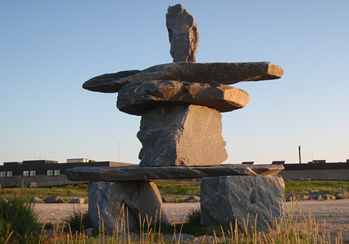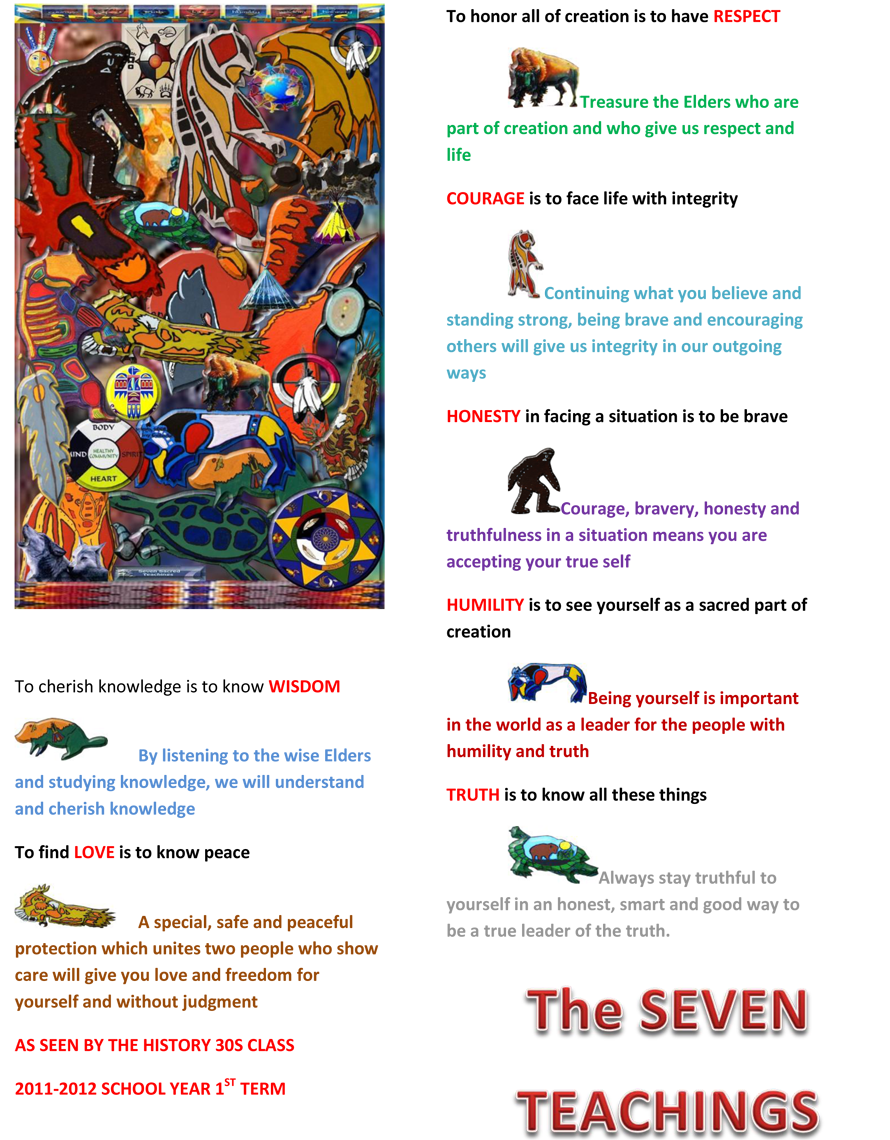| HOME | KIDSROCK | TEENSROCK | GEOTOURS |

| Origins of Rock |
Rock Lore | Manitoba... rocks! |
EARTHWise | Geo-Gallery | DownLodes | Fun Zone | Rock Talk | Geo-Words | Geo-Links | Explore Manitoba |
Early in North America's history, Indigenous people shared a legend about 'Turtle Island'. They lived in close harmony with 'Mother Earth' and believed in the importance of being caretakers of the land. In Manitoba, minerals and rocks were used by Indigenous people near Black Island.
Mother Earth Imagine having thousands of years of wisdom to share about “Mother Earth”... Indigenous peoples have always had a history of sharing wisdom or ancestral knowledge and teachings from generation to generation. Their teachings show respect for all of the Earth's elements. These teachings are shared by grandmothers and grandfathers who are called 'knowledge keepers' or 'teachers'. Elders in each Indigenous community are considered 'experts' in their fields of study, just as school teachers are considered in schools. |
 |
Indigenous peoples learned to live well in harmony with the land. They understood the Earth and its processes. They knew how to prosper using the Earth’s resources in a respectful way.
Everything that ‘Earth’ offers is considered by Indigenous peoples as ‘gifts’ from the Creator. Elders teach that gifts from the land, plants, water, animals, the sky and yes...even rocks!...must be used wisely and ‘gifted’. This means that when Indigenous people remove anything from the earth they believe it is important to respect the earth and to offer back a gift. This means that an offering or gift is also given back to the earth.
Circle Teachings
All of the rich and valuable Earth wisdom used by Indigenous peoples came to them through Circle Teachings. The teachings were shared by Elder experts in each Indigenous community.
Why a circle? Think about it...a circle reflects the shape of the earth. A circle makes us think about harmony and balance. For Indigenous peoples, a circle also reminds us that all living things depend upon one another to live. In Indigenous communities, Grandmothers and grandfathers believe that if the 'circle of life' becomes damaged it will break or harm nature's balance.
Grandfather Rocks
You’ve probably heard of grandfather clocks. But, have you ever heard of grandfather rocks? To Indigenous peoples, all of earth's elements are valuable and important. However, rocks are considered to be the wisest of all Earth's elements! After all, rocks have been around the longest, for millions, even billions of years. Because rocks are so old and have many stories to tell, Indigenous peoples sometimes call the Earth's rocks 'grandfathers'.
Rocks Tell Stories
Scientists and geologists study rocks to learn more about the earth's ancient rock history. For Indigenous peoples, studying rocks is important too, because they are able to learn valuable lessons from the earth.
In many areas, unique or special rocks are chosen by Indigenous peoples for important ceremonies. Rocks are sometimes used to mark sites for celebrations. If you happen to come across a site where it appears stones have been used as markers, it may be a sacred place for Indigenous people. Follow a simple rule: Do not disturb!
As Indigenous peoples studied rocks, they learned that when rocks wear down or erode, the minerals within the rocks are absorbed by plants and animals. In this way, minerals become part of the 'circle of life' or life cycle, and contribute to the well-being and balance of nature all around us.
Red Rock and Flint
Indigenous peoples in Manitoba once mined rocks for various uses. The people who settled along the shores of Lake Winnipeg mined a red-coloured mineral called 'hematite'. The hematite was crushed into a fine powder and mixed with water and other materials to form 'paint'. Many rocky cliff faces in Manitoba are painted with ancient sacred symbols called pictographs.
In northern Manitoba, another rock called ‘flint’ was also mined. Flint is made of silicon or quartz. Because it is hard and sharp, Indigenous peoples found many uses for the rock. It was formed into cutting tools to prepare food and to make clothing. Flint was used to make axe heads which were used to cut wood and arrowheads for hunting. Flint is used even today for sacred ceremonies. It can still be used to strike a flame to build a fire. Large and unique rocks were often chosen and are still chosen today for special ceremonies. They are also used to build ‘medicine wheels’ by placing large stones in a certain location and position. These stone formations or petroglyphs are still used and considered sacred by Indigenous peoples today. |
|
 |
In Canada’s far north and around Hudson’s Bay, the Inuit developed and used special skills to create carving stone as well as ‘Inukshuk’, stone landmarkers or monuments. Inuksuit were built around good hunting places and have remained important to the Inuit for thousands of years. The Inuit also constructed a stone figure built in the shape of a person called an ‘Inunnguaq’. The Innunnguaq featured in the photo above is built in front of the Eskimo Museum in Churchill. It is made from Churchill quartzite (metamorphosed sedimentary quartz). (Download a picture of an Inukshuk to colour here).
The 7 Sacred Teachings were one way Aboriginal people shared their knowledge and wisdom about the earth.

Download this image as a poster ![]()
(Poster developed by 2011-12 history and geography class of Audrey Guiboche, HBOIERC, Kinosao Sipi - Norway House Cree Nation, Manitoba)
Download and read Claire and her Grandfather ![]() to learn more about how Indigenous people connected to the earth and its resources, including minerals and metals.
to learn more about how Indigenous people connected to the earth and its resources, including minerals and metals.
Explore for more...
